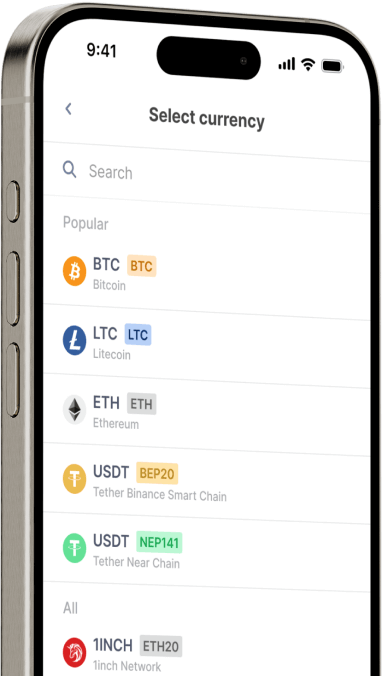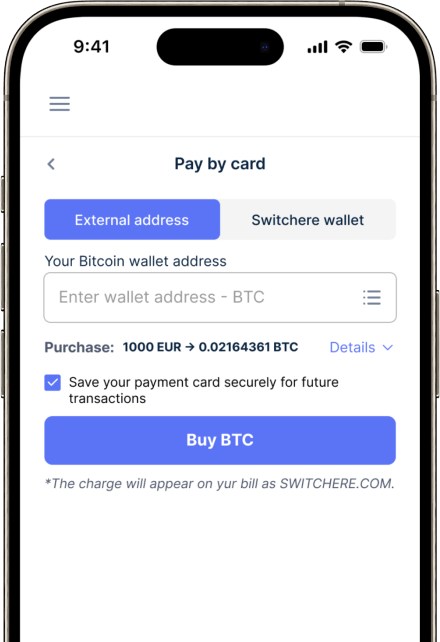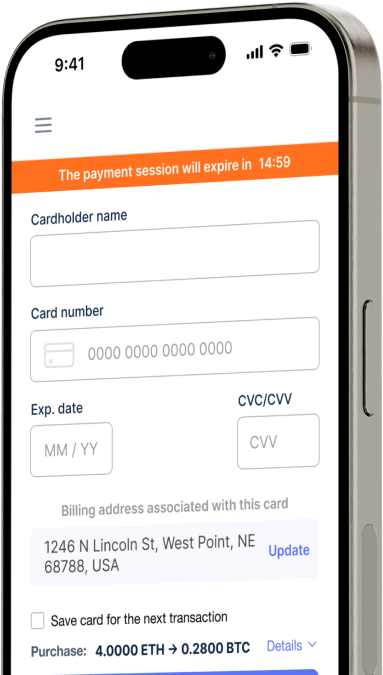Convert
United Arab Emirates dirham (AED) to Dai (DAI) Instantly
Purchase Dai (DAI) with United Arab Emirates dirham (AED) easily at Switchere and benefit from fast, secure transactions.
About
Dai (DAI)
DAI (DAI) stands as a pioneering decentralized stablecoin soft-pegged to the US Dollar, operating on the Ethereum blockchain as an ERC-20 token. Its primary purpose is to provide a censorship-resistant and transparent digital asset that maintains a stable value, offering a crucial building block for the decentralized finance (DeFi) ecosystem. Governed by the MakerDAO community through the MKR governance token, DAI's stability is achieved through a sophisticated system of over-collateralization. Users generate DAI by locking up approved crypto assets, such as ETH or WBTC, into smart contracts known as Maker Vaults (formerly Collateralized Debt Positions or CDPs). This process ensures that every DAI in circulation is backed by a greater value of collateral, mitigating volatility risks.
The core technology relies on Ethereum's smart contract capabilities to manage these Vaults, automate liquidations if collateral value drops below a certain threshold, and maintain the peg through various stability mechanisms, including Stability Fees and the Dai Savings Rate (DSR). The DSR allows DAI holders to earn yield on their holdings directly on-chain. DAI's utility token function is primarily as a stable medium of exchange, a unit of account, and a store of value within countless DeFi applications, including lending protocols, decentralized exchanges, and yield farming strategies. As one of the most widely integrated crypto-backed stablecoins, DAI is a foundational element of Web3 infrastructure, enabling peer-to-peer transactions and complex financial instruments without reliance on traditional intermediaries.
Buy Other 150+ Cryptocurrencies for United Arab Emirates dirham (AED)
Other Coins for United Arab Emirates dirham (AED)
-
AED to ZRX
-
AED to 1INCH
-
AED to AAVE
-
AED to ACH
-
AED to ALGO
-
AED to TLM
-
AED to ANKR
-
AED to APE
-
AED to NFT
-
AED to API3
-
AED to APT
-
AED to ARPA
-
AED to AUDIO
-
AED to AVAX
-
AED to AVAX
-
AED to AXS
-
AED to BADGER
-
AED to BAL
-
AED to BNT
-
AED to BAT
-
AED to BNB
-
AED to BSW
-
AED to BSV
-
AED to BLUR
-
AED to BONE
-
AED to CTSI
-
AED to CELR
-
AED to CELO
-
AED to CEL
-
AED to LINK
-
AED to CHZ
-
AED to CHR
-
AED to C98
-
AED to COMP
-
AED to CFX
-
AED to PEOPLE
-
AED to CVX
-
AED to ATOM
-
AED to CTC
-
AED to CRV
-
AED to DAI
-
AED to DASH
-
AED to MANA
-
AED to DENT
-
AED to DGB
-
AED to DYDX
-
AED to XEC
-
AED to EOS
-
AED to ETC
-
AED to ENS
-
AED to ETHW
-
AED to FET
-
AED to FIL
-
AED to FLOKI
-
AED to GALA
-
AED to GNO
-
AED to ONE
-
AED to HBAR
-
AED to HOT
-
AED to HOOK
-
AED to ICX
-
AED to ILV
-
AED to IMX
-
AED to INJ
-
AED to ICP
-
AED to IOST
-
AED to IOTX
-
AED to JASMY
-
AED to JST
-
AED to KAVA
-
AED to KCS
-
AED to KSM
-
AED to KNC
-
AED to LDO
-
AED to LQTY
-
AED to LPT
-
AED to LOOKS
-
AED to LRC
-
AED to LUNA
-
AED to MKR
-
AED to MASK
-
AED to EGLD
-
AED to ALICE
-
AED to NEAR
-
AED to XEM
-
AED to NEXO
-
AED to NOT
-
AED to NMR
-
AED to OKB
-
AED to OMG
-
AED to ONT
-
AED to EDU
-
AED to OP
-
AED to OGN
-
AED to CAKE
-
AED to PAXG
-
AED to PENDLE
-
AED to DOT
-
AED to POL
-
AED to QTUM
-
AED to QNT
-
AED to RDNT
-
AED to XRD
-
AED to RVN
-
AED to REN
-
AED to RSR
-
AED to RLC
-
AED to RPL
-
AED to SFP
-
AED to SHIB
-
AED to SKL
-
AED to SXP
-
AED to STND
-
AED to STG
-
AED to XLM
-
AED to GMT
-
AED to STORJ
-
AED to STMX
-
AED to SUSHI
-
AED to SNX
-
AED to USDT (Polygon)
-
AED to USDT (AVAC)
-
AED to USDT (BEP20)
-
AED to USDT (ERC20)
-
AED to USDT (SPL)
-
AED to USDT (NEP141)
-
AED to USDT (FA2)
-
AED to USDT (TRC20)
-
AED to USDT (JETTON)
-
AED to XTZ
-
AED to GRT
-
AED to SAND
-
AED to TFUEL
-
AED to THETA
-
AED to RUNE
-
AED to TON
-
AED to TUSD (BEP20)
-
AED to TUSD (TRC20)
-
AED to TWT
-
AED to UOS
-
AED to UMA
-
AED to UNI
-
AED to USDC (Polygon)
-
AED to USDC (SPL)
-
AED to USDC (OP)
-
AED to USDC (BEP20)
-
AED to USDC (AVAC)
-
AED to USDC (ARB)
-
AED to USDC (ERC20)
-
AED to VET
-
AED to VRA
-
AED to WAXP
-
AED to WOO
-
AED to WLD
-
AED to WBTC
-
AED to WMINIMA
-
AED to XDC
-
AED to YFI
-
AED to YGG
-
AED to ZIL
How to Buy Dai (DAI)
Frequently Asked Questions
-
What is the AED to DAI trading pair and why is it relevant?
The AED/DAI pair allows you to purchase Dai (DAI), a decentralized stablecoin pegged to the US Dollar, using the United Arab Emirates Dirham (AED). Its relevance comes from providing a direct fiat on-ramp for UAE residents to access the DeFi ecosystem. DAI is an ERC-20 token generated through the MakerDAO protocol, backed by on-chain collateral, making it a transparent digital asset for transactions and savings.
-
How does MakerDAO's system ensure the stability of DAI when purchased with AED?
The stability of DAI is independent of the fiat currency used to buy it, like AED. It's maintained by the MakerDAO protocol through a system of over-collateralized loans in smart contracts known as Vaults. Users lock up volatile assets (like ETH) to generate DAI, and this collateral is always valued higher than the DAI issued. This mechanism, governed by MKR token holders who manage stability fees, ensures DAI remains soft-pegged to the US Dollar.
-
Are there specific regulatory considerations for AED to DAI transactions in the UAE?
Yes, the UAE has a developing regulatory framework for digital assets. Transactions are overseen by bodies like the Virtual Assets Regulatory Authority (VARA) in Dubai and the ADGM in Abu Dhabi. When converting AED to DAI, you must use a licensed fiat on-ramp that adheres to strict KYC/AML compliance rules. This ensures secure trading and helps prevent illicit financial activities.
-
What are common methods to buy DAI with AED on a cryptocurrency exchange?
To buy DAI with AED, you typically need to use a regulated cryptocurrency exchange that serves the UAE region. The process involves completing KYC/AML verification, depositing AED via local bank transfer or debit card, and then executing a trade on the AED/DAI order book. Ensure the platform offers sufficient liquidity for a secure and efficient transaction.
-
After buying DAI with AED, what are the best practices for storing this digital asset?
For maximum security, it is recommended to withdraw your DAI from the exchange to a self-custody digital wallet where you control the private keys. Options include hardware wallets (most secure) or reputable software wallets like MetaMask or Trust Wallet. This prevents loss of funds from exchange-related risks. Always back up your seed phrase securely and never share it.
-
What kind of fees are involved in an AED to DAI blockchain transaction?
A complete AED to DAI transaction involves multiple potential fees. First, your bank or payment provider may charge a fee for the AED deposit to the exchange. Second, the exchange will have a trading fee (maker/taker) for the conversion. Finally, if you withdraw the DAI (an ERC-20 token) to a personal digital wallet, you must pay an Ethereum network 'gas fee', which fluctuates based on network congestion.




